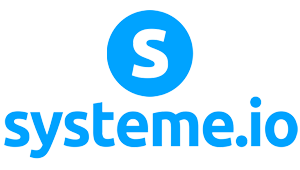1. Choose an attention-grabbing title.
- Think about what “results” your target audience wants to achieve.
- Your title should hint at DESIRABLE results.
- Your title should hint at SPECIFIC results.
- Your title should hint at REAL results.
- Your title should hint at INTRIGUING results.
- Your title should hint at TARGETED results.
Note: See main text for examples of each.
- Templates you can use for creating an ezine article title:
- How to __________ in ___________ Easy Steps.
- How to __________ in ___________ (Time Frame).
- The Real Secret to Quickly _____________.
- Top 2 Ways to _____________.
- 5 __________ Mistakes That ___________ (Undesirable Result)
- 3 Little Known Tips for _______________.
- ____________ Checklist: Are you _____________?
- The Hidden Costs of _________________.
- 7 Simple Steps to _________________.
- (Acronym): A Proven System for _____________.
2. Determine 3-5 points of interest.
- If your article is a “how-to” article, then outline the 3-5 STEPS in the process you’ll be explaining. If your article is a “list” article, then outline the 3-5 ITEMS you’ll be sharing (such as keys, ways, questions, resources, tips, case studies, etc.)
- You’ll want your article to be 500-750 words, so divide the word count up among the number of points you’re identifying (along with a short opening and closing), and that’s how long each of these sections will need to be.
3. Write an interesting opening sentence.
- Use one of the traditional “types” of openings:
- Ask a question.
- Reveal something startling.
- Inject emotion.
- Provide proof or facts.
- Present a problem.
- List and overview.
- Use one of these templates:
- Did you know ___________?
- Be honest – are you one of those people who _________?
- How many of these mistakes are you making?
- I’ve got a confession to make.
- This may come as a surprise to you…
- Everyone wants to know how to _______, well, here’s how I do it…
- I bet you’re frustrated over…
- If this doesn’t get you excited, then nothing will!
- According to new studies…
- When you see the results, you’ll probably be as surprised as I was.
- 4 out of 5 people / 27% of all participants / only 3 said “yes”.
- One of the biggest problems _________ face is _____________.
- Possibly the most misunderstood part of ______ is __________.
- There’s good news – _________ can be fixed with very little effort.
- If you really want to ___________, you’ll need to ____________.
- Yes, you really can __________ if you _______________.
- Here’s a really simple way to ______________.
4. Fill-in-the-blanks for each of your points.
- Your writing should be PERSONAL. Write with one person in mind, using the words “you” and “your” as often as possible.
- Your writing should be POSITIVE. Be motivating and empower your reader to accomplish whatever you’re sharing in the article.
- Your writing should be PRACTICAL. Usefulness is the measuring stick by which all ezine articles are judged. Does your article have some kind of practical advice your reader can apply and use?
- Your writing should be POINTING. Your content should always “point” the reader towards whatever you hope to get them to do in your resource box.
Note: Make your “final point” the one that all other content is completely DEPENDENT upon. (See main transcript for specific references and ideas.)
5. Close with a call to action.
- Your article closing should transition the reader from your content to your “resource” box by connecting the two.
- Write “useful, but incomplete” content that provides the reader with valuable information, but hints at additional resources in your byline which will enhance or maximize that information.
6. Create a response-producing resource box.
- The #1 goal of your ezine article should be to get new subscribers to join your list(s).
- Give away a free report or mini-course in your resource box.
- Place that freebie offer (I.E. “optin form” or “download link”) at the top of a salesletter, or embed it into the copy of a salesletter, or redirect visitors to a salesletter after they’ve joined a list.
- That way, you get them to join a list AND expose them to a money-making offer at the same time.
- Give away a free report or mini-course in your resource box.
- 4 ways to use your resource box to get readers to take action and click on your link:
- Multiplication. Your resource box references something that offers “multiple ideas” for accomplishing your “final point” from the article.
- Expansion. Your resource box references something that “expands” on the “final point” from the article.
- Automation. Your resource box references something that “automates” or “speeds up” what you shared in the “final point” from your article.
- Absorption. Your resource box references something that will allow the reader to accomplish the “final point” from your article for FREE or at a REDUCED cost.
- Multiplication. Your resource box references something that offers “multiple ideas” for accomplishing your “final point” from the article.
Note: Make whatever you reference in your resource box highly related to the “final point” from your article.
7. Put on the finishing touches before publishing.
- Check for misspelled words.
- Check for improper grammar.
- Format your article at 60-65 characters per line.
- Keep your article word count between 500-750 words.
- Check your SPAM rating.





